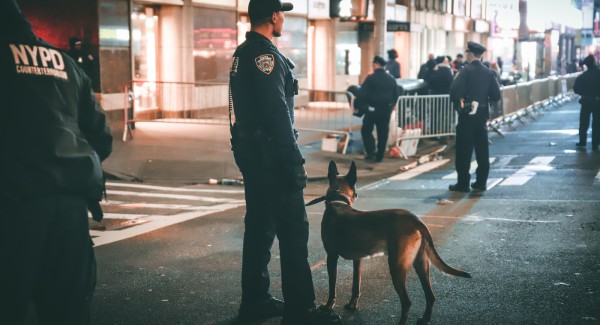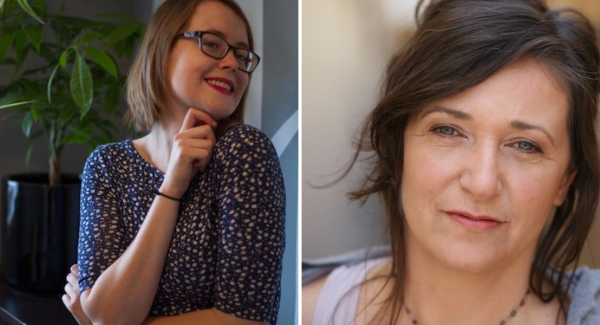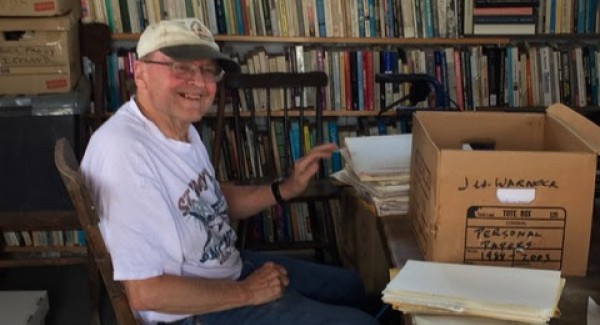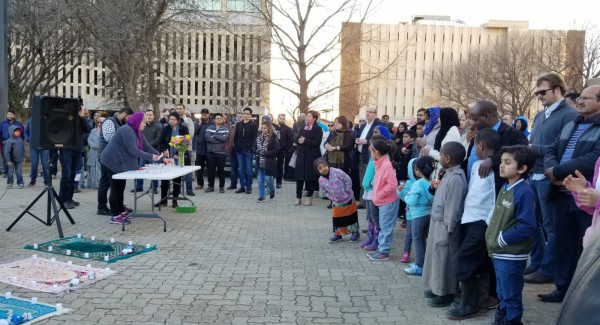Does Saskatchewan need a citizen watchdog for the police?
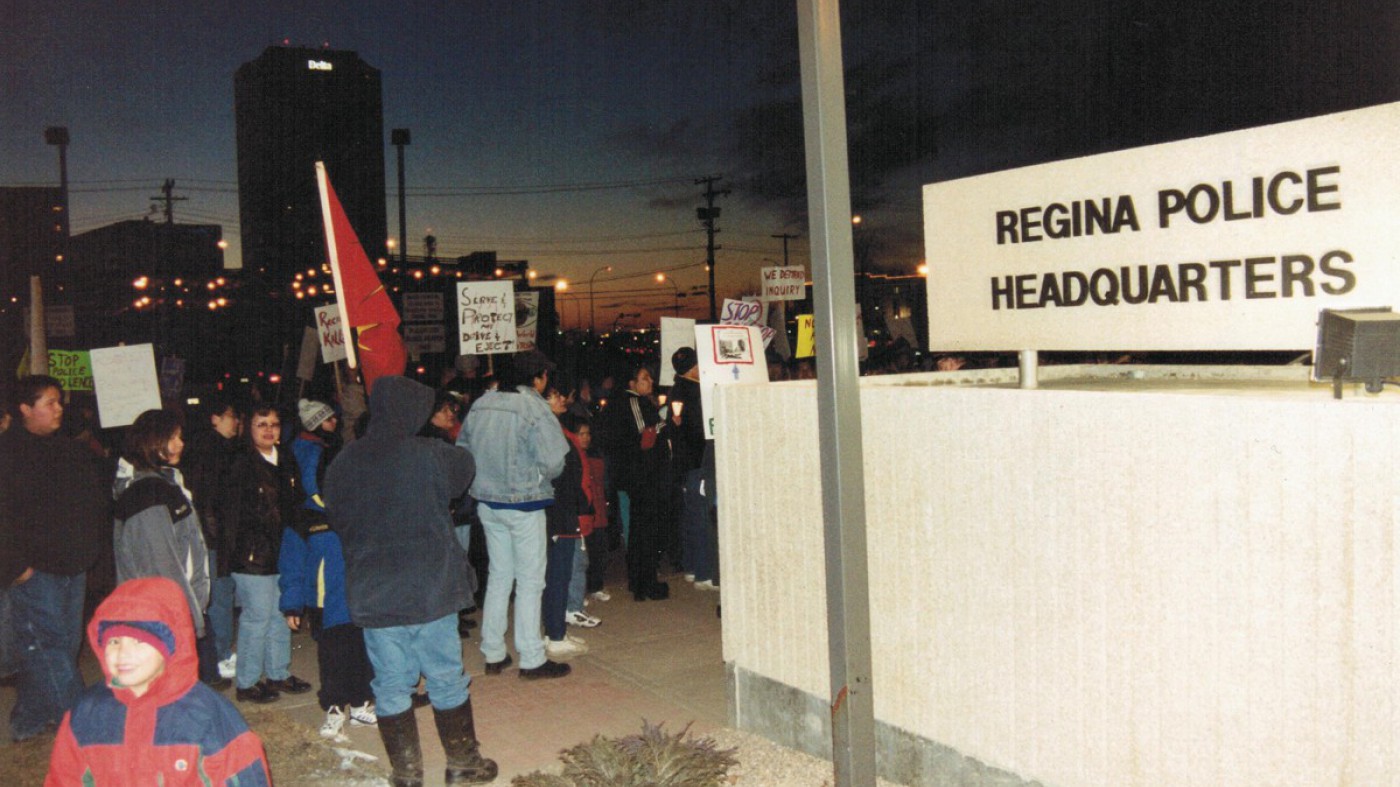
A rally against police brutality in Regina in 2000. The rally appears to have been in response to the deaths of two Indigenous men, Rodney Naistus and Lawrence Wegner, near Saskatoon in 2000. Both froze to death on the outskirts of the city – deaths reminiscent of the practice of “starlight tours.” During starlight tours, police officers would arrest Indigenous people, drive them out of the city, and abandon them there in the middle of winter. Photo from the _Briarpatch_ archives, by Elsie Beechie.
On June 28, 2019, a six-person jury serving at a coroner’s inquest found that the 2016 shooting death of Joshua Megeney by Constable Jesse Jackson of the Saskatoon Police Service’s (SPS) Tactical Support Unit was a homicide. Megeney, 28, was killed by a bullet to the head during an armed standoff in a Saskatoon residence. The killing was initially investigated by the SPS Major Crimes Unit – colleagues of the officer being investigated. The case – a homicide for which no one was held responsible – prompted renewed calls for Saskatchewan to create a civilian oversight entity, an independent citizen watchdog to oversee the investigation of officer-involved deaths and critical injuries.
To some, civilian oversight entities are a unifying force that protect both the public and the police, offering succour in the form of “accountability” and “transparency” when a cop kills or seriously injures a citizen. The National Association for Civilian Oversight of Law Enforcement (NACOLE), the non-profit body that supports civilian overseers in the United States (their Canadian counterpart is CACOLE), says on their website that civilian oversight entities “benefit not only the individual complainant, but also the larger community, police and sheriff’s departments, and even elected or appointed officials.” The Canadian Civil Liberties Association says that the major argument in favour of the entities is “ensuring confidence in the police.”
Saskatchewan is currently one of only three provinces not to have a civilian oversight committee.
Saskatchewan is currently one of only three provinces not to have a civilian oversight committee (Newfoundland and Labrador is the most recent to commit to forming a Serious Incident Response Team). In Saskatchewan, a police agency investigates themselves, or swaps investigations with another agency in the province. Not coincidentally, it was only last year that Saskatchewan became one of the last provinces to make it mandatory for municipal police forces like the SPS to comply with freedom of information (FOI) requests, wherein a civilian or journalist requests government documents.

Few of us choose to think about the reasons why we might need civilian oversight bodies in the first place. But the very need for them demonstrates the immense power that we have granted the police and the ways that police have abused that power – and sometimes continue to do so. “Policing shows what kind of a brutal system exists,” says Jeff Shantz, a community organizer and professor in the criminology department at Kwantlen Polytechnic University in B.C. “We live in a society that devotes so many of its social resources to surveillance and repression and regulation and brutalization and containment of the population.” It’s perhaps unsurprising, then, that we accept and even expect that the police will seriously harm or even kill us – to the point of accepting without question the need for an entirely separate entity to investigate them when they do so.
Who polices the police?
Before diving deeper into the powers and limitations of oversight entities, it’s important to have an understanding of what’s actually meant by “civilian oversight.” It does not mean conduct agencies like the Saskatchewan Public Complaints Commission, a government-appointed panel that looks into complaints about municipal officer “misconduct” – usually around misbehaviour, attitude, and execution of duties. It does not mean the RCMP’s Civilian Review and Complaints Commission, which does the same thing on a provincial and federal level (Saskatchewan joins most other provinces in contracting out provincial policing to the RCMP, though the RCMP largely polices rural areas since urban centres typically have their own forces). Nor does it refer to police boards like the Saskatchewan Police Commission, which performs such duties as policy compliance and operational audits of police services, training oversight, and trend monitoring.
The conversation about implementing a civilian oversight body in Saskatchewan focuses on establishing an entity that is independent of the police to investigate incidents beyond bad conduct, like police-involved deaths and serious injuries. It would respond to all police-involved serious incidents, whether they occur on the watch of a municipal police force or the RCMP. These investigations can drag on for years, and because of privacy laws, it often means that reporters and the public can’t get information about what transpired because the investigation is ongoing. In Ontario and Manitoba, privacy laws also ensure that no oversight entity releases the names of cops involved in serious incidents who are found not to have acted criminally, so there’s no way that the public can know if some officers are turning up in serious incidents over and over again.
“We live in a society that devotes so many of its social resources to surveillance and repression and regulation and brutalization and containment of the population.”
The director of a such an entity is, by law, someone who has never worked in law enforcement but has a deep understanding of the legal system, such as a former Crown prosecutor. Most people who support civilian oversight bodies do so because they understand that if police investigate their own colleagues, they have an incentive to let them off easy – to protect their own and preserve the public’s trust in the police force. But what if civilian oversight committees weren’t made up solely of civilians at all?
In almost every oversight agency in the country, at least half of investigators are former or active-duty cops. In Quebec, the Bureau des enquêtes indépendantes has legislation that encourages the investigative team to try for parity – half law enforcement and half civilians – but doesn’t require it. In Nova Scotia’s Serious Incident Response Team (NS SiRT), two investigators are civilians with a career’s worth of experience working for the RCMP, and two are active-duty police officers who have been seconded. In this context, secondment is when the civilian director appoints an active-duty cop to the team. The officer is then temporarily “released from their current duties [and is] under the sole jurisdiction and direction of the civilian director,” according to Zane Tessler, the civilian director of Manitoba’s Independent Investigation Unit (IIU). Seconded officers remain members of their own services and police associations during their tenure with the oversight entity.
While the British Columbia Independent Investigations Office (IIOBC) prohibits former RCMP officers and serving B.C. police officers from being investigators, there is no such prohibition on former police officers as long as they aren’t from within the province. Until June of this year, B.C. cops had to have been out of the service for five years before they could become IIOBC investigators – this rule was recently suspended for two years. In Manitoba, six of the eight investigators on the IIU are retired law enforcement. According to Tessler, the Alberta Serious Incident Response Team (ASIRT) – which does not post the breakdown of their investigative unit on their website – does have the jurisdiction to second active-duty service members, as do Manitoba and Nova Scotia. Tessler, who was very forthcoming about the makeup of his investigative team in Manitoba, says “Alberta has had a greater experience of active members” in their oversight unit. Ontario’s Special Investigations Unit (SIU) – the oldest oversight entity in Canada – says that just three of their 14 lead investigators have been police officers. But when you broaden that lens to include their 42 “as-needed” investigators, 35 have worked for a police service
In almost every oversight agency in the country, at least half of investigators are former or active-duty cops.
That means that between Ontario, Nova Scotia, and Manitoba alone, 46 of all “civilian investigators” are not entering the aftermath of a serious incident involving police as ordinary civilians at all, but as individuals with a career’s worth of experience as police officers. Some of them may have worked alongside the very people they are investigating or even been involved in similar serious incidents themselves. Hidden in plain sight behind the words “independent” and “civilian” are dozens of investigators inculcated in the very police culture their work is supposed to oversee.
Ron MacDonald, a former Crown prosecutor, current president of CACOLE, and chief civilian officer of IIOBC, admits that his investigative team functions as, and is made up partly of, police. “We’re little police agencies,” MacDonald says. “Made up of some former police and some non-former police. When the call comes in, we respond just like a police agency would to investigate the incident that has occurred – be it a shooting, be it a pursuit where there has been a car accident, or an arrest where someone’s taken to the ground and they break their leg or their shoulder. We investigate those independently of the police.”
Just a few kilometres away from the Surrey offices of the IIOBC, at Kwantlen, Shantz flatly dismisses the notion of independence. “None of them, not even the best of them, are in any way independent,” he asserts. “They’re still dependent on the cops.” In fact, “I don’t like to think of them as an oversight body,” he says. “They don’t really provide any oversight. They don’t provide any accountability.”
The primary goal of these entities, which Shantz refers to as “documentation bodies,” is not to determine whether it is just or fair for a police officer to have hurt or killed a citizen, or even to reduce the number of serious incidents involving police and the public, but to “increase the public’s faith in the police” when citizens are injured or killed by them, a point that MacDonald made repeatedly. In fact, according to a CBC investigative report, “Deadly force,” the number of citizens killed by police in Canada has increased between 2000 and 2017. Meanwhile, most of Canada’s civilian oversight bodies were formed in 2012 and 2013. As police forces across the country make moves to improve their public perception, they’re also killing more members of the public than before.
“They don’t really provide any oversight. They don’t provide any accountability.”
Oversight bodies don’t even necessarily lead to an increase in the number of police officers who are charged with wrongdoing when they kill or seriously injure members of the public. Ontario’s SIU – which Shantz says is “held up as a kind of ‘gold standard’” of oversight – closed 416 cases in 2018 and only 15 of them saw charges laid. In some provinces, like Ontario and B.C., even when an oversight body believes that an officer’s actions were criminal, they have no authority or special standing before the courts, and no disciplinary powers of their own.
Their investigations are often seriously flawed because police agencies delay reporting the incidents, like in the case of the alleged beating of 19-year-old Dafonte Miller by an off-duty cop, Michael Theriault, and his brother. The SIU wasn’t notified of the incident for months, and only then by Miller’s lawyer, something that former SIU director Ian Scott said will “erode the integrity of the investigation.” In Manitoba, a 2018 investigation by the Winnipeg Free Press uncovered emails between the Manitoba IIU and the Winnipeg Police Service (WPS) in which Tessler expressed concern that there were “internal criminal investigations of WPS” that were not being sent to the IIU at all. The IIU director also found that in at least one incident, officers had discussed their notes at the scene, and in another, a cadet read the notes of another officer and then lied to the IIU, describing events they could not have seen because they had already gone home. In no province do oversight agencies have the power to compel police chiefs to follow their recommendations, nor do they have power to convict when police services disregard the law.
In other cases, according to a former SIU director, their recommendations are simply ignored by the force being investigated. “There is no mechanism for holding police accountable,” Shantz argues. While the directors of some oversight entities, like NS SiRT and the IIU, have the authority to lay criminal charges, others, like B.C.’s IIO and Quebec’s Bureau des enquêtes indépendantes, have no charging authority, meaning they make the recommendation to the police service whose officer is being investigated, and that service has the ultimate authority on whether or not to lay charges. Former SIU director André Marin told the Toronto Star in 2017 that complaints and regulations were “continually and regularly ignored by police services with impunity,” adding that “there is no consequence attached to police thumbing their nose at the SIU and the law.”
In other cases, their recommendations are simply ignored by the force being investigated.
In Alberta, Manitoba, Ontario, and Nova Scotia, officers who are the focus of an investigation following a serious incident are not even compelled by law to turn over their notes from the incident to the oversight investigators – granting them the same rights as civilians under the Charter of Rights and Freedoms to protection from self-incrimination – even though police notes are critical pieces of evidence in an investigation. (In Quebec, subject officers are required to submit a written statement to the Bureau des enquêtes indépendantes before consulting with a lawyer or other officers involved in the incident, a law that the Montreal Police Brotherhood and the Fédération des policiers et policières municipaux du Québec have challenged in the Quebec Superior Court.)
Shantz says the very nature of the legal system, in which “the state protects the state” means that even when oversight entities do find grounds to believe a criminal offence was committed, “it’s the Crown, [which] works with the police and relies on the police for other investigations they’re working on,” that has the final say whether or not to bring charges. The Canadian handbook on prosecutions does not mandate that the Crown and police work together on prosecutions, but notes that “In some cases it will be appropriate for Crown counsel to obtain the views of the police.”
“Police aren’t a public service. They’re a state function,” Shantz emphasizes. And misunderstanding that distinction means fundamentally misunderstanding oversight entities and the accountability they claim to provide. “Accountability for the police isn’t, ‘are you harming the community?’” Shantz says. “It’s ‘are you maintaining the structures you’re supposed to maintain?’”
Still, Shantz says oversight entities are “not completely useless. They do provide a sort of documentation body.” And he says that in Canada, that’s a function that desperately needs to be fulfilled. “There’s no real, formal mechanism for documenting police violence in our society. It’s not being done on a systematic basis anywhere. It’s been left to community members, family members, people who have lost a loved one, and critical criminologists and some journalists to piece those things together.”
At the moment, the most comprehensive public log of police killings of members of the public is the CBC’s “Deadly force” investigation, with profiles of the 461 cases where someone has died in an encounter with the police between 2000 and 2017. And the most up-to-date public database is a WordPress blog called killercopscanada. “With a body like the SIU or the IIO[BC], at the very least you do have some documentation,” Shantz says. “You still have to read their reports with a critical eye, but at least it’s something.”
“Police aren’t a public service. They’re a state function. Accountability for the police isn’t, ‘are you harming the community?’ It’s ‘are you maintaining the structures you’re supposed to maintain?’”
The current police chiefs of both of Saskatchewan’s major municipal police forces have indicated an openness to a civilian oversight entity. Marlo Pritchard, then chief of the Weyburn Police Service, also expressed his own openness to such an organization in July of this year. And communities that have been on the receiving end of police violence are investing hope in a civilian oversight entity, too. The Federation of Sovereign Indigenous Nations’ vice-chief renewed the FSIN’s calls for one in June, alongside the mother of Jordan Lafond, an Indigenous man who died in 2016 after a police chase that led to a car crash. Lafond was kneed in the head up to four times by a Saskatoon police officer while he was being arrested.
It’s something that will not be unwelcome in the wake of two civilian deaths at the hands of police in Saskatchewan already in 2019; reports that vehicle pursuits – most of which used tactics the police themselves deemed inappropriate – by the Regina Police Service are up 130 per cent; and an annual report from the Saskatchewan Public Complaints Commission that raised alarm bells about a laundry list of police errors, from “lack of articulation in report writing, particularly where force was used” to “the inappropriate exercise of the powers of arrest, search and seizure, and the entry into homes without authority.”
Still, it’s important to remember that an oversight entity will not remedy the harms that the police inflict on our communities, nor will it solve the systemic issues that we have come to depend on the police to respond to. “Police have become the primary response to social problems,” Shantz says. This means that without strengthened social supports, the situations that most frequently lead to serious incidents with the police – those involving people dealing with mental health and drug use crises – will continue to rise, no matter how much “transparency” and “accountability” is promised to us by the powers that be.
“Apart from changing the political and economic structure that police were developed to maintain,” says Shantz, there is no cure for the violence that law enforcement inflicts on our communities.
“Policing is policing. The state protects the state.”

